
Midas is an Elizabethan era stage play, a comedy written by John Lyly. It is arguably the most overtly and extensively allegorical of Lyly's allegorical plays.

Midas is an Elizabethan era stage play, a comedy written by John Lyly. It is arguably the most overtly and extensively allegorical of Lyly's allegorical plays.
Midas was entered into the Stationers' Register on 4 October 1591; it was first published in 1592 in a quarto printed by Thomas Scarlet for Joan Broome. She was the widow of William Broome, the bookseller who issued reprints of Lyly's Campaspe and Sapho and Phao in 1591; the widow Broome herself published the first editions of Lyly's Endymion (1591) and Gallathea (1592).
Midas was probably acted by the Children of Paul's, Lyly's regular company through most of his playwriting career. The title page of the first edition states that the play was performed at Court on Twelfth Night, probably on 6 January 1590. [1] John Dover Wilson proposed that Lyly himself may have played the role of Midas; [2] but this is a speculation unsupported by evidence.
"Obviously" [3] the play was written after the defeat of the Spanish Armada in 1588. The play also features an allusion to the English Armada of 1589; the authorship of Midas must date from the 1588–89 period.
The student theatre ensemble of Stuart Hall School, located in Staunton, Virginia, staged a production of Midas in 2010 directed by Theatre Programme Director, Brett Sullivan Santry. The performers, who ranged in age from eleven to seventeen, rehearsed and performed under the tenets of Original staging practices from the Elizabethan period. Given the play's extremely limited modern production history, the probability exists that the Stuart Hall production marked the first time the play was staged in North America.
Lyly based his play on the treatment of the Midas story given in Book xi of the Metamorphoses of Ovid; he departs from Ovid's version mainly to strengthen the allegorical aspects of the play (see below). He exploits both aspects of the Midas legend in classical mythology – the golden touch and the ass's ears.
Bacchus, the god of wine, rewards the hospitality of Midas, king of Phrygia, by offering him anything he desires. The king's three courtiers, Eristus, Martius, and Mellicrates, variously advise him to choose rewards that center on love, war, and wealth; Midas accepts the advice of Mellicrates and asks that everything he touches turn to gold. (In the classic legend, Midas is motivated simply by greed; in Lyly's play, Midas wants gold partly to finance his planned invasion of the island of Lesbos, an idea that winds throughout the play.)
In the play as in the myth, Midas's misfortunes with his golden touch follow; his clothes, food, wine, and even his beard all turn to gold. Midas eventually cures himself by taking the advice of Bacchus and bathing in the river Pactolus, which becomes gold-producing as a result. In the second phase of the king's adventures, Midas, hunting in a wood on Mount Tmolus, encounters Apollo and Pan, who are preparing to engage in a musical competition. Midas thrusts himself into the role of judge, and decides in favor of Pan; Apollo responds by giving the king the ears of an ass. Midas conceals his affliction at first, but the news passes from nymphs to shepherds, and is eventually whispered by reeds to all the world.
Midas's sensible daughter Sophronia (a Lylian addition) appeals to Apollo's oracle at Delphi for guidance. Midas goes to Delphi, admits his foolishness and expresses repentance; his auricular affliction is cured, and a newly humbled Midas renounces his plans for conquest, especially against the stalwart islanders of Lesbos.
The play has a more overtly comic subplot focused on Motto, Midas's barber. Motto comes into possession of Midas's golden beard after removing it from the king's face; but the beard is stolen from him by the mischievous pages that are a standard feature of Lyly's drama. Motto recovers the beard by curing a case of toothache (barbers doubled as dentists in Lyly's era, and for long before and after). But the pages exploit Motto's role in spreading the news about the king's ass-ears: they accuse him of treason, and demand and obtain the beard as the price of their silence.
It is universally recognized that Lyly's Midas represents the fabulously wealthy Philip II of Spain, while the island of Lesbos that he longs to conquer is Elizabeth's England. Nicholas John Halpin, in his Oberon's Vision (1834), offered a complex and detailed interpretation of the fine points of Lyly's allegory, in which the Pactolus is the Tagus River in Portugal; the barber Motto is Philip II's secretary Antonio Pérez, who was banished for betraying royal secrets; Martius is the Duke of Medina Sedonia, while Mellicrates is the Duke of Alva; Eristus is Ruy Gomez de Libra; and Sophronia is Philip's daughter Isabella Clara Eugenia, among various other identifications. Critics rarely go so far as to embrace all of Halpin's points, though most concede some of the more obvious, like Sophronia/Isabella. [4]

Midas was the name of a king in Phrygia with whom several myths became associated, as well as two later members of the Phrygian royal house.

In Greek mythology, Silenus was a companion and tutor to the wine god Dionysus. He is typically older than the satyrs of the Dionysian retinue (thiasos), and sometimes considerably older, in which case he may be referred to as a Papposilenus. The plural sileni refers to the mythological figure as a type that is sometimes thought to be differentiated from a satyr by having the attributes of a horse rather than a goat, though usage of the two words is not consistent enough to permit a sharp distinction. Silenus presides over other daemones and is related to musical creativity, prophetic ecstasy, drunken joy, drunken dances and gestures.
In Greek mythology, Melampus was a legendary soothsayer and healer, originally of Pylos, who ruled at Argos. He was the introducer of the worship of Dionysus, according to Herodotus, who asserted that his powers as a seer were derived from the Egyptians and that he could understand the language of animals. A number of pseudepigraphal works of divination were circulated in Classical and Hellenistic times under the name Melampus. According to Herodotus and Pausanias (vi.17.6), on the authority of Hesiod, his father was Amythaon, whose name implies the "ineffable" or "unspeakably great"; thus Melampus and his heirs were Amythaides of the "House of Amythaon".

John Lyly was an English writer, dramatist of the University Wits, courtier, and parliamentarian. He was best known during his lifetime for his two books Euphues: The Anatomy of Wit (1578) and its sequel Euphues and His England (1580), but perhaps best remembered now for his plays. Lyly's distinctive and much imitated literary style, named after the title character of his two books, is known as euphuism.
Labraid Loingsech, also known as Labraid Lorc, son of Ailill Áine, son of Lóegaire Lorc, was, according to medieval Irish legend and historical tradition, a High King of Ireland. He was considered the ancestor of the Laigin, who gave their name to the province of Leinster. An early dynastic poem calls him "a god among the gods", suggesting he may once have been an ancestor-deity of the Laigin.
The Saecular Games was a Roman religious celebration involving sacrifices and theatrical performances, held in ancient Rome for three days and nights to mark the end of a saeculum and the beginning of the next. A saeculum, supposedly the longest possible length of human life, was considered as either 100 or 110 years in length.
The Goat's Ears of the Emperor Trojan is a South Slavic fairy tale published by Serbian author Vuk Karadžić in 1870. Andrew Lang included it in The Violet Fairy Book. It was translated from a German version of Vuk Karadžić's Serbian Fairy Tales. The tale was also translated by John Naake as The Emperor Trojan's Goat's Ears and published in Slavonic Fairy Tales.

Metamorphoses is a play by the American playwright and director Mary Zimmerman, adapted from the classic Ovid poem Metamorphoses. The play premiered in 1996 as Six Myths at Northwestern University and later the Lookingglass Theatre Company in Chicago. The play opened off-Broadway in October 2001 at the Second Stage Theatre. It transferred to Broadway on 21 February 2002 at the Circle in the Square Theatre produced by Roy Gabay and Robyn Goodman. That year it won several Tony Awards.

The Maid's Metamorphosis is a late Elizabethan stage play, a pastoral first published in 1600. The play, "a comedy of considerable merit," was published anonymously, and its authorship has been a long-standing point of dispute among scholars.
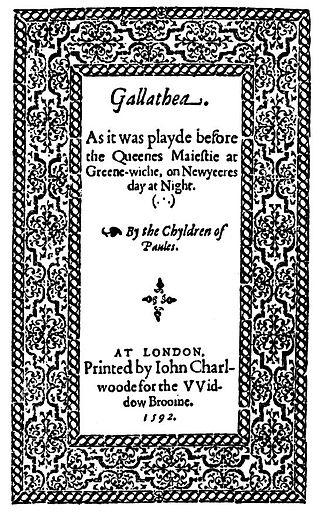
Gallathea or Galatea is an Elizabethan era stage play, a comedy by John Lyly. The first record of the play's performance was at Greenwich Palace on New Year's Day, 1588 where it was performed before Queen Elizabeth I and her court by the Children of St Paul's, a troupe of boy actors. At this point in his literary career, Lyly had already achieved success with his prose romance Euphues and was a writer in residence at Blackfriars theatre. The play is set in a village on the Lincolnshire shore of the river Humber and in the neighboring woods. It features a host of characters including Greek deities, Nymphs, fairies, and some shepherds.

Le Jugement de Midas is a French comédie mêlée d'ariettes, in three acts by André Grétry dedicated to Madame de Montesson. It was first performed, with amateur singers, on 28 March 1778 in the private little theatre set up by Madame de Montesson in the apartments of her secret husband Louis Philippe, Duke of Orléans at the Palais-Royal in Paris. The libretto is by the Irish playwright Thomas Hales with additional contributions by Louis Anseaume. It was based on the burlesque opera Midas (1760) by Kane O'Hara. The public premiere at the Comédie-Italienne took place on 27 June 1778.

Endymion, the Man in the Moon is an Elizabethan era comedy by John Lyly, written circa 1588. The action of the play centers around a young courtier, Endymion, who is sent into an endless slumber by Tellus, his former lover, because he has spurned her to worship the ageless Queen Cynthia. The prose is characterised by Euphuism, Lyly's highly ornate, formalised style, meant to convey the intelligence and wit of the speaker. Endymion has been called "without doubt, the boldest in conception and the most beautiful in execution of all Lyly's plays." Lyly makes allusions to ancient Greek and Roman texts and traditional English folklore throughout the play. While the title and characters are references to the myth of Endymion, the plot sharply deviates from the classical story and highlights contemporary issues in Elizabeth I's court through its allegorical framework.
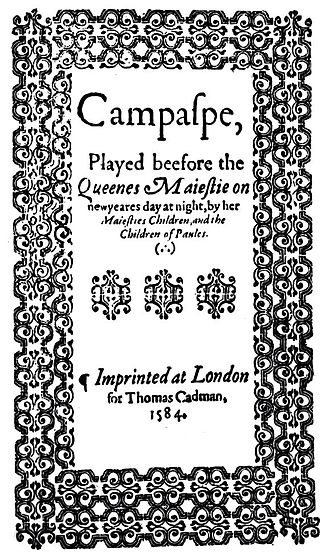
Campaspe is an Elizabethan era stage play, a comedy by John Lyly based on the life of Campaspe. Widely considered Lyly's earliest drama, Campaspe was an influence and a precedent for much that followed in English Renaissance drama.
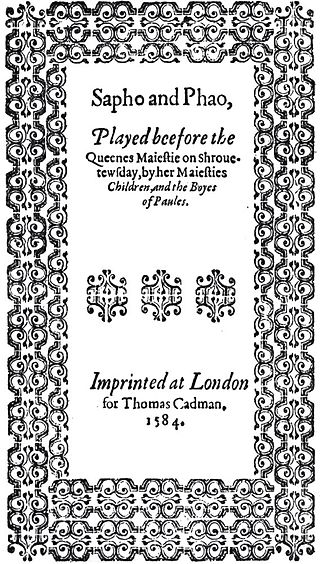
Sapho and Phao is an Elizabethan era stage play, a comedy written by John Lyly. One of Lyly's earliest dramas, it was likely the first that the playwright devoted to the allegorical idealisation of Queen Elizabeth I that became the predominating feature of Lyly's dramatic canon.
Summer's Last Will and Testament is an Elizabethan stage play, a comedy written by Thomas Nashe. The play is notable for breaking new ground in the development of English Renaissance drama: "No earlier English comedy has anything like the intellectual content or the social relevance that it has."

Midas is a verse drama in blank verse by the Romantic writers Mary Shelley and Percy Bysshe Shelley. Mary wrote the drama and Percy contributed two lyric poems to it. Written in 1820 while the Shelleys were living in Italy, Mary Shelley tried unsuccessfully to have the play published by children's magazines in England in the 1830s; however, it was not published until A. Koszul's 1922 scholarly edition. Whether or not the drama was ever meant to be staged is a point of debate among scholars. The play combines the stories of the musical contest between Apollo and Pan and that of King Midas and his ability to turn everything he touches to gold.
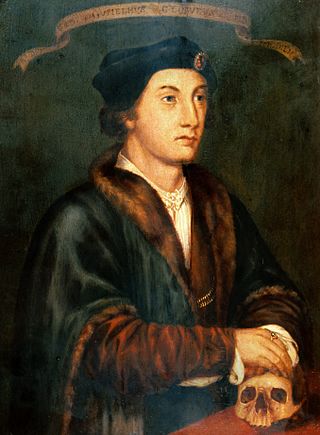
William Clowes the Elder was an early English surgeon. He published case reports in which he advocated the application of powders and ointments. He also published one of the first reports in English on how to reduce a femur.

The Flaying of Marsyas is a painting by the Italian late Renaissance artist Titian, probably painted between about 1570 and his death in 1576, when in his eighties. It is now in the Archbishop's Palace in Kroměříž, Czech Republic and belongs to the Archbishopric of Olomouc. It is one of Titian's last works, and may be unfinished, although there is a partial signature on the stone in the foreground.
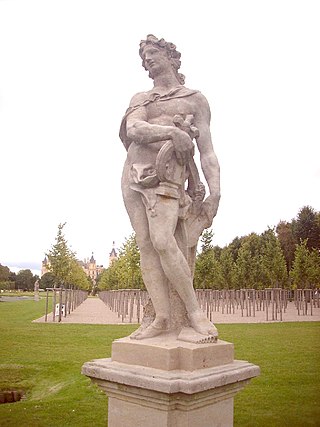
Geschwinde, geschwinde, ihr wirbelnden Winde, BWV 201, is a secular cantata by Johann Sebastian Bach, on a libretto by Picander. It is a dramma per musica, likely composed for a public performance in 1729, around which time its oldest extant printed libretto was published. The text, titled Der Streit zwischen Phoebus und Pan, is based on the "Ears of a Donkey" story in Ovid's Metamorphoses, and mocks unsophisticated music in favour of a more intelligent composition style.
King Gyeongmun's ear tale is a tale about the ear of King Gyeongmun of Silla. "Samguk Yusa" tells two stories related to King Gyeongmun. One is that King Gyeongmun slept comfortably only when snakes stuck out their tongues and covered his chest whenever he slept, the other is that the king's ears are donkey ears.